Reports
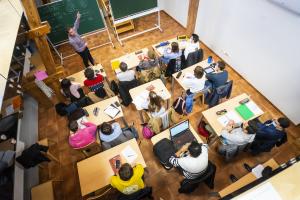
In the week from 13 to 20 November 2021, CTU in cooperation with University of Chemistry and Technologyorganized a total of 11 intensive courses within the Athens program, which were attended by 206 foreign students from leading European technical universities.
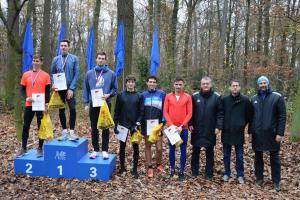
On Saturday, 20 November 2021, the 68th running race and the 58th Academic Cross Country Run Championships were held at the Hvězda Park. The race was organized by the Institute of Physical Education and Sport of CTU and it was held under the auspices of Rector of CTU in Prague, doc. Vojtěch Petráček.
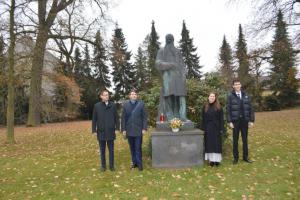
The "Josef, Marie and Zdeňka Hlávkas Talent Award" is intended for talented students who have demonstrated exceptional ability and creative thinking in their field of study, up to the age of 33. Together with the award, the laureates receive a foundation contribution of 25 thousand crowns. The students received their 2021 awards on 16 November 2021 at the Lužany Castle, which is part of the endowment of the oldest Czech foundation established in 1904. The proposal for the award is sent to the Foundation's Board of Directors by the rectors of the Czech universities in Prague and the Brno University of Technology. Young talented employees of the Academy of Sciences of the Czech Republic were also awarded.
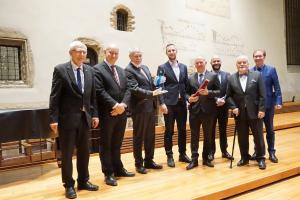
2021/11/24
On Tuesday 23 November, during a gala evening in the Bethlehem Chapel in Prague, the Engineering Academy of the Czech Republic (IA CR) presented the award for an outstanding technical project for the twenty-fourth time. The 2020 award went to the team of the Czech Institute of Informatics, Robotics and Cybernetics (CIIRC) of CTU in Prague for the RP95-3D protective half-mask. The ceremony also saw the appointment of an honorary foreign member of the IA CR, Prof. Wolfgang Wahlster, one of the founders of Industry 4.0 of the German Research Center for Artificial Intelligence, DFKI. The ceremony took place under the auspices of Rector of CTU in Prague, doc. RNDr. Vojtěch Petráček, CSc., and Dean of the Faculty of Mechanical Engineering of CTU in Prague, prof. Ing. Michael Valášek, DrSc.
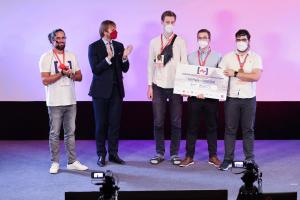
From 19 to 21 November 2021, nearly 200 Czech and international hackers competed at the Institute of Clinical and Experimental Medicine (IKEM) in Prague at the European Health Hackathon 2021. The aim of the event, which was also partly held online, was to create innovations in healthcare within 48 hours. The winner of the weekend marathon was the UrineMeter project by students of the Faculty of Information Technology of the Czech Technical University, which enables automatic and accurate measurement of urine released by patients. Thanks to the device, the time of healthcare professionals is saved, and there is no need to disturb the patient during the measurement. The winning team, called Bit Beasts, was presented with a cheque for EUR 3,000 by Health Minister Adam Vojtěch.
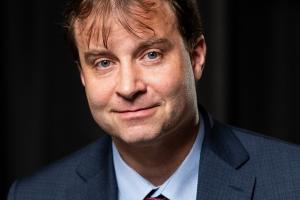
Professor Ondřej Přibyl, Head of the Department of Applied Mathematics, was elected as a candidate for the position of Dean of the Faculty of Transport at the meeting of the Academic Senate of the Faculty of Transport on 16 November. After his appointment as Rector, he will succeed Associate Professor Pavel Hrubeš as Dean of the Faculty from February 2022.
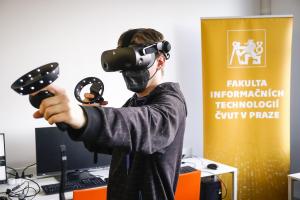
The Faculty of Information Technology of the CTU in Prague (FIT CTU) is opening a modern equipped Virtual Reality Classroom. Students can now use 25 virtual reality glasses. Thanks to them, every student has an innovative space to create their own virtual world and learn to control it. The faculty is thus responding flexibly to the growing importance of virtual reality worldwide and, in addition to the new state-of-the-art equipment, is expanding its virtual reality teaching to include the subject Virtual Reality Technology.
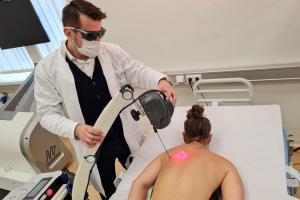
A team of experts from the Faculty of Biomedical Engineering of CTU headed by Prof. MUDr. Leoš Navrátil, CSc. MBA, dr. h. c., started to use high-power laser therapy, commonly used in musculoskeletal rehabilitation, to minimize the consequences of covid pneumonias in spring 2021. This type of radiation is proving to be an effective treatment method that can transform scar tissue in the lung back into elastic, functional tissue.
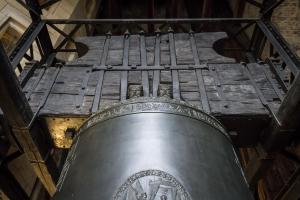
The cooperation between the Metropolitan Chapter of St. Vitus in Prague and several departments of the Czech Technical University in Prague began in 2015, when the Chapter turned to a team of experts to assess at that time not entirely satisfactory condition of the Zikmund Bell, which is the largest Czech bell and a national cultural monument. The group of specialists included the staff of the Department of Materials of the Faculty of Nuclear Sciences and Physical Engineering of the Czech Technical University in Prague (FNSPE) under the leadership of doc. Ing. Jan Siegel, CSc. Four years ago they were joined by Ing. Jaroslav Šedina, Ph.D., from the Faculty of Civil Engineering of CTU.
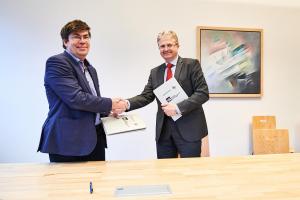
On 8 November 2021, the technology concern Rohde & Schwarz and the Faculty of Electrical Engineering (FEL) of CTU signed a cooperation agreement. The agreement will enable the long-term development of activities in the field of education and research and development.